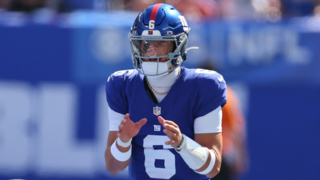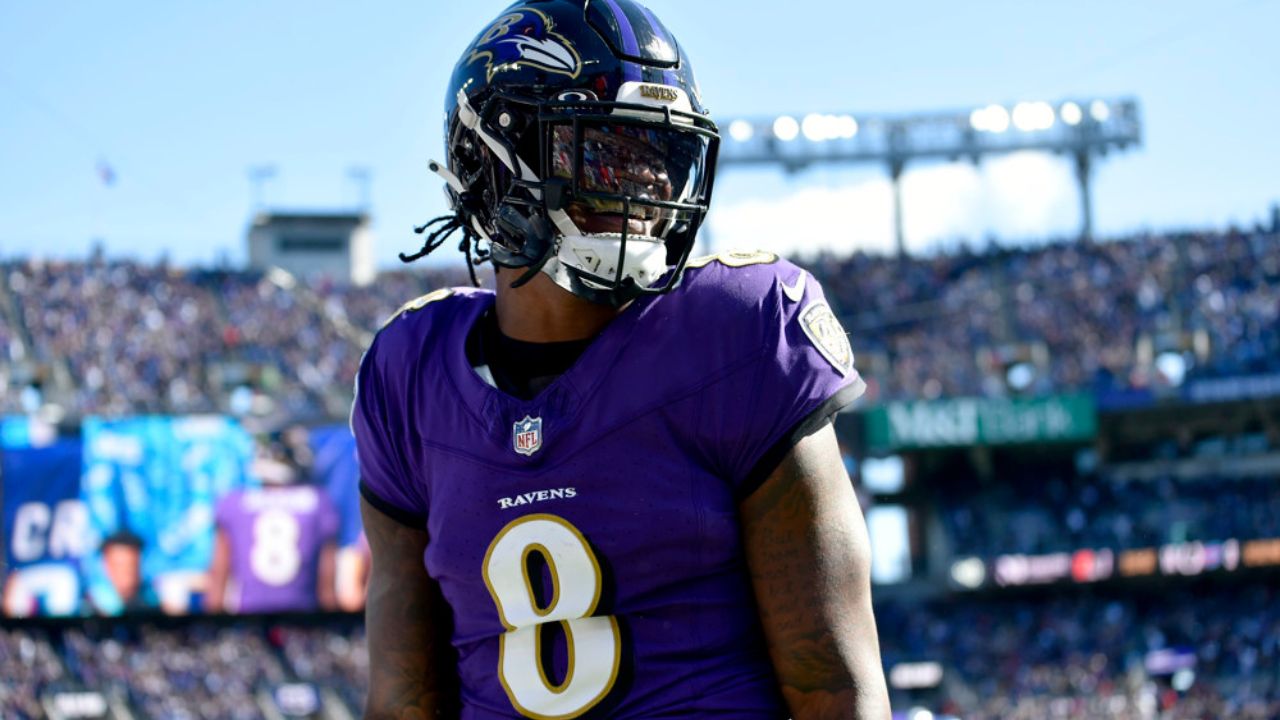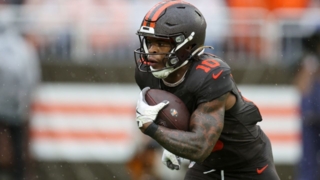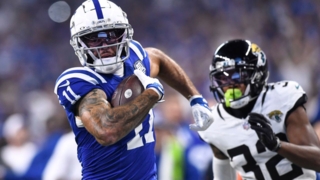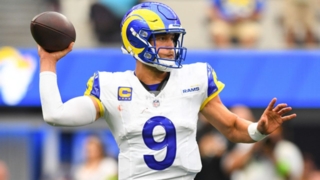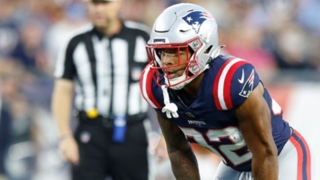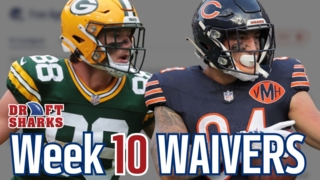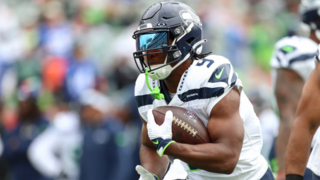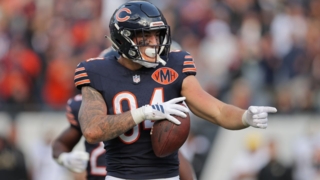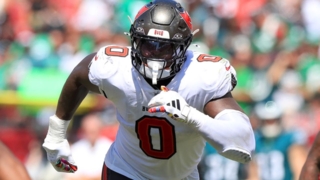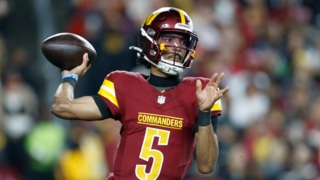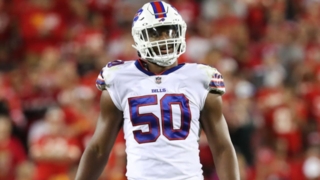2022 Auction Strategy Guide

You know what's most frustrating about your typical snake draft? Your draft position basically guarantees there will be some players you just can't get.
Jonathan Taylor isn't lasting until Pick 9, for example. Justin Jefferson isn't reaching the 1-2 turn.
And that's just 1 of the great things about auction drafts. You get a shot at everyone.
Wanna put Christian McCaffrey and Cooper Kupp on the same roster? Go for it.
Wanna skip the 1st-round guys altogether and load up on extra 2nd-round types? You can do it.
The format offers much more room for varied strategies. But it also presents its own set of limitations. Plan appropriately, and you can leave your league mates panicking. Head in without a plan yourself, though, and you could be the one sweating and overspending.
This annual article is all about making sure that doesn't happen to you. So let's get rolling.
The Basics
If you're reading this article, then you probably know the gist of the auction-draft format. But just in case you’re not familiar, here are the basics:
- League owners take turns nominating players to be acquired.
- Anyone interested bids on the player until the bidding stops.
- High bid wins the player and loses that amount of money from the owner's preset bank.
- Repeat until all rosters are full.
- Realize when it’s over that you couldn’t have spent those 4 hours in a better way.
The Approach
Start by syncing up your Draft War Room. Instead of displaying your draft position (as in a "standard" draft), the settings will have an entry for the available auction budget for each team. That will be key for setting player dollar values on your board.
You'll also select an Auction Strategy from a list we've streamlined a bit. The options (down from 5 to 3):
Focus on starters over depth
Balanced roster
Focus on depth over starters
If you're an experienced auction-drafter, I'd recommend playing with that setting a little to see which most closely aligns the prices at the top of your DWR board with the typical top winning bids in your league. Keep in mind, though, that the dollar values we display in the DWR rankings are just that: valuations.
So if our valuation on, say, McCaffrey seems a little high but the prices behind him look similar to players at that level in your particular draft, then you probably have the right strategy. In that case, consider the high valuation on McCaffrey a signal that you can reasonably go beyond what might usually be your league's top bid price.
If you are doing auctions for the first time, I'd recommend going with "starters over depth" as your board setting for a typical league size.
No matter what your specific team-building plan, you'll be filling in the bottom of your with some cheap fliers. I have learned through trial and error that it's generally better to go ahead and spend those few extra dollars on a starter than to save them in hopes of fortifying your bench.
This can differ, of course, if you play in a larger league or with more starting-lineup spots than the average fantasy league.
Budgeting
No matter what overall path you decide to travel, budgeting your auction spending will be crucial. Here’s my general breakdown by position (with dollar amounts for a $200 bank in parentheses):
QB = 7% ($14)
RB = 40% ($80)
WR = 45% ($90)
TE = 7% ($14)
K = $1
DST = $1
Want Josh Allen or an elite TE? Then you’ll need to adjust your cap at another position or 2. We’ll get to each position more specifically in a few minutes.
The Draft War Room will keep track of your remaining budget, but it doesn't yet have a way to track winning-bid prices on players your opponents select.
Try to keep track of not only who leaves the board during your draft, but also the dollar amounts of their winning bids. Looking at auction values on your league-hosting site can give you some sense of the overall marketplace this year. But the market that you’re actually operating within is your specific league. So don’t get frozen out of a desired tier just because the whole group is costing more than you expected going in.
Setting Tiers
Positional tiers are important no matter what kind of draft you’re in, but they can help you even more in an auction.
You’ll notice tier designations on the positional rankings pages of your DWR. We do this to show you which players we view as similar values at a given position and where we see a more significant drop off vs. the next option(s).
I have made the mistake in the past of trying to wait for the cheapest player in a tier. There's obviously nothing wrong with trying to get a player at a lower price than you think he's worth. My mistake, however, has been in watching other guys in the same tier go for reasonable prices and counting on the lingering player or 2 coming off the board even cheaper.
Unless you're drafting with a group of newbies, there's probably at least 1 other drafter in this scenario with bankroll remaining and similar valuations on such players. So you can often wind up in a bidding war that ultimately offers you no savings and might even drive up the player's price -- because the tier is otherwise empty. Lose that bidding war, and you've missed the desired tier altogether.
And if you seem to be the only one valuing that player at a certain price level ... well, that's not always a good thing.
Sure, sometimes it means we see something that others in our league don't. But it could also mean that you're the one overvaluing this player. Consider this the auction-draft version of reaching too far to "get your guy" in a snake draft.
This is not to say that you can't be the buyer on the last guy in a tier. But it's better to fall into that circumstance than to plan on it.
Posting/Nominating Players
I've paid attention to plenty of experienced auction drafters on this particular subject and changed some of my own stances here. But I still believe it's quite possible to overrate this aspect of an auction. There's nothing wrong with strategizing your player nominations, but you're ultimately just posting a single player for 10+ drafters to bid on -- all with varying plans, approaches, rosters and available banks. So don't overthink the how or why here.
That said, here are some specific strategies to try ...
Follow a high-dollar bidding war with a high-priced player you don't want. I used to simply be on the side of using early nominations to post the high-priced guys I don't expect to be the buyer on. The logic there would be to drain other teams' banks. The problem: Obviously only 1 team is getting that guy. So this will need to happen a bunch of times to affect most of the bankrolls in your league. Ineffectual.
Let's say, though, that I just wanted Davante Adams leave the board amid a bidding fury. Now I might nominate Deebo Samuel. I don't want the 49ers wideout at his market price this year, and I'm taking a shot that the winning bid on Adams further biases my league mates on what Samuel should go for.
The same tactic can work for any position and any player you expect to go for a higher price than you believe he should.
Don’t wait too long before nominating your guys. This is another one I've learned through the years. Early on, I would never nominate a player I hoped to land until very late in my draft. The mistaken logic there: Wait until banks are drained so I can get my guy at the optimal price.
The reason that's a mistake: I'm letting others direct the action. I'm obviously not just waiting until the end of the draft to acquire all of my players. So by "saving" any number of players until late, I'm subconsciously limiting my own spending. I can't go $2 higher here, because I need that to make sure I get _____ later.
I can tell you that I've much more often looked back on a draft and wished I'd spent those few extra dollars on the early guy than saved up some bank for that 4th wideout I thought I coveted.
Follow big-name RBs with their perceived handcuffs. This is similar to the 1st strategy in this section. You're playing on biases here. Sometimes you can get the winner on that initial RB to overpay for the handcuff. Or perhaps you create a mild bidding war among drafters who missed out on the starter but want to buy the situation. And if neither of those materializes, then you secure a cheap handcuff-level RB well before the end of the draft, when everyone is nearly out of money and just grabbing guys for a dollar or 2.
All 3 of those paths are potential wins for you.
If you have any other nomination strategies, I'd love to hear them either in the comments section below or on the Draft Sharks Discord.
Bidding
This area is less about specific strategies and more about avoiding "don'ts" that can screw up your overall. For example ...
Don’t be afraid to go above market price early. This is as much a reminder to me as it is a tip for you. I used to head into a draft planning to not be the winning bidder on the top names. It's fine to stop short of those high costs, but closing off a whole area of the draft like that can keep you from accessing the upside that resides up there.
And this applies beyond the 1st-round type of players. It can be intimidating to win the bidding for the 1st player in a tier. You'll generally assume that this guy will set the bar for that tier, and everyone else will come in under. But that certainly won't always be the case.
It might well be that half the league looks at his price, feels like that team owner got a steal and collectively drives the salary of the consensus #2 (or #3) at the position beyond the previous player's price.
So to reiterate a point from earlier, don't be afraid to spend those few extra dollars early in your draft on a player you want.
Don’t “price enforce” to a level you’re not comfortable paying. Price enforcing is when you bid up a player you don't necessarily want because you don't want a league mate to get him at below market value. This is OK to do, as long as you're OK with adding the player at that price.
For example, I'm not overly excited about Jaylen Waddle this year. But I believe he's a talented player and certainly believe there's a chance he delivers another top-20 PPR season -- perhaps even top-12, if everything breaks right for him. So although I don't expect to be the high bidder on him, I'm not ready to let someone snag him for just 7% of budget early in a draft.
Where you can get into trouble here, though, is trying to squeeze an extra few dollars out of someone else's budget on a specific player.
If you don't want to pay $30 for A.J. Brown this year, for example, then don't get caught trying to force the drafter who has been touting him up to $32.
How to Attack Each Position
Your Draft War Room will help guide your pricing by position, and you can even check out our perfect draft series for the appropriate league size to gauge some specific player/position builds.
Here's how I'm generally looking to approach each position in this year's auctions, though ...
QB
I'll rarely be the buyer on the top-priced QBs. But I've noticed QB prices dropping some over the past couple of years in the auction leagues I repeat year to year. I'm not opposed to "paying up" for a QB if that pay-up now stops short of 10% of my budget.
That said, I'm still more likely to focus on players in the QB7-QB12 range of pricing as my starter. I was able to (somehow) grab Russell Wilson for $4 in a slow auction earlier this offseason. I think that's an extreme example, but I also think he's a good target and good representative of the range this year. Tom Brady is likely to go cheaper right now from that same range. And Kyler Murray has a chance to leave the board at a lower price than he should.
I'm also not afraid to come away with Dak Prescott (12th in our rankings) as my top QB, or to pair QBs from just outside the top 12 (say, Kirk Cousins/Derek Carr/Trevor Lawrence).
RB
Just as we've seen his ADP rise, expect Saquon Barkley to cost more at auction than he would have a month or 2 ago.
I discussed Christian McCaffrey a bit earlier in this article and have already landed him in an auction this season at roughly 75% of what the DWR says he should be worth. I believe there's opportunity to play on others' injury worries and get him at a much better price than he should garner relative to the other top RBs.
James Conner is likely to be a value. Travis Etienne can be easier to invest in here because many drafters will have a tougher time envisioning what a 3rd-round pick should cost. He's an intriguing player to nominate relatively early.
There are plenty of committee backs with paths to lead workloads in the Round 6-9 range of ADP that can be value targets here as well.
WR
Cooper Kupp, Justin Jefferson and Stefan Diggs look relatively safe as early-round level investments. There's less injury risk in general on a WR than a RB, and the top wideouts often leave the board more cheaply than the RBs who sit right next to them in ADP. Targeting 1 of these 1st-round WRs is not a bad idea.
To me, the next few tiers beyond the 1st-round guys look less well-defined than in other years at this position. So let the tiers and dollar valuations on your DWR vs. the actual winning-bid prices in your league help guide where the best values are.
TE
I don't know that I have ever been the winning bidder on the top TE. Travis Kelce will probably look like a fine value at the end of your auction if you compare his winning-bid price to guys from other positions who sit near him in ADP. But the opportunity cost of paying more than $20 for a TE and subtracting that salary from other positions just never attracts me. I'd rather add that salary to a pair of RBs/WRs and take my chances with a TE in the single-digits of salary.
Dallas Goedert is likely to go for something like one-third of Kelce's price, for example. Do you think he'll collect more than 33% of Kelce's point total this season?
So do I.
Kicker and D/ST
Try not to go above $1 at either position. If you have to go to $2 ... OK.
IDP
Linebacker looks flatter than usual this year, in part because of Colts LB Shaquille Leonard's lingering recovery from June back surgery. Don't pay up too much for this position.
That's a good general rule for the other IDP spots as well. I would, however, be willing to pay up for Chargers S Derwin James' ceiling. And I'd be willing to chip in a few extra dollars for some of the top DEs or Aaron Donald in a DT-required league. Frankly, he might be the player most worth paying up for at any position (offense or defense) in such a format.
Back to the DEs, though, Chandler Jones, Danielle Hunter, Brian Burns and Haason Reddick stand as potentially big values that can keep you from overspending -- or allow you to chip in a little more for the upside of Myles Garrett or a Bosa, if you need to start 2.
Draft using the best dynamic tool in the industry. Our fantasy player valuations (3D Values) change during your draft in response to...
- Exact league settings - direct sync
- Opponent and Team Needs
- Positional scarcity & available players
- Ceiling, injury risk, ADP, and more!
You need a dynamic cheat sheet that easily live-syncs with your draft board and adapts throughout your draft using 17 crucial indicators.
Get your Draft War Room Today
 Redraft
Redraft Dynasty
Dynasty Best Ball
Best Ball